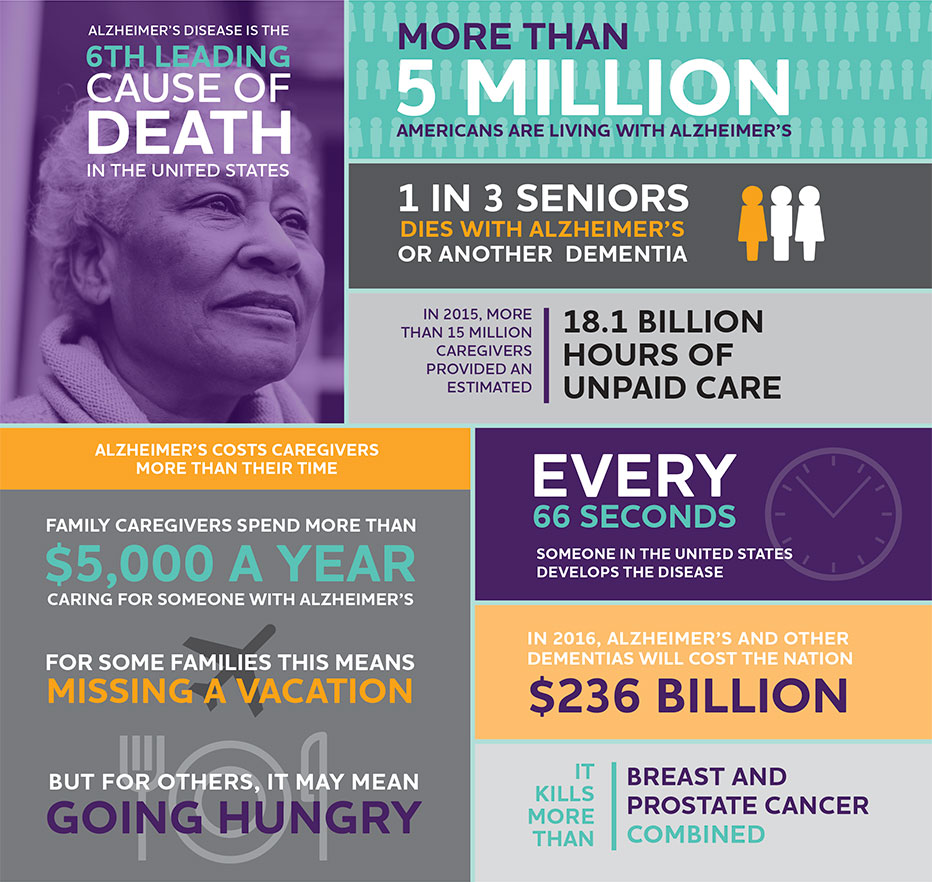This is sponsored content written by FabOverFifty in partnership with the Alzheimer’s Association. All opinions are of FabOverFifty.
Over 5 million Americans are currently living with Alzheimer’s disease, and by 2050 that number is projected to reach as many as 16 million, according to the Alzheimer’s Association. More than two-thirds of Americans with Alzheimer’s are women.

June is Alzheimer’s & Brain Awareness Month, and we want to bring you some important truths about this progressive and fatal brain disease.
 “It’s time to break the taboo and talk about Alzheimer’s,” says Geri Brin, founder of FabOverFifty.com. “When I interviewed Dr. Keith Black, head of Neurosurgery at Cedars-Sinai in Los Angeles, I learned a great deal about this horrific disease, including the new tests and treatments that are becoming available to us. As our generation ages, it’s important for us to understand all our options for coping with Alzheimer’s.”
“It’s time to break the taboo and talk about Alzheimer’s,” says Geri Brin, founder of FabOverFifty.com. “When I interviewed Dr. Keith Black, head of Neurosurgery at Cedars-Sinai in Los Angeles, I learned a great deal about this horrific disease, including the new tests and treatments that are becoming available to us. As our generation ages, it’s important for us to understand all our options for coping with Alzheimer’s.”
![]() The sixth leading cause of death in the U.S., Alzheimer’s cannot be prevented or cured. This fatal disease progresses by attacking and killing nerve cells and tissue in our brain, affecting one’s ability to remember, think and plan.
The sixth leading cause of death in the U.S., Alzheimer’s cannot be prevented or cured. This fatal disease progresses by attacking and killing nerve cells and tissue in our brain, affecting one’s ability to remember, think and plan.
SYMPTOMS AND RISK FACTORS
While age is the most widely known risk factor, Alzheimer’s is not a normal part of aging. The Alzheimer’s Association has identified 10 key warning signs of the disease:
| 1.) Memory loss that disrupts daily life 2.) Challenges in planning or solving problems 3.) Difficulty completing familiar tasks 4.) Confusion with time or place 5.) Trouble understanding visual images and spatial relationships |
6.) New problems with words in speaking or writing 7.) Misplacing things and losing the ability to retrace steps 8.) Decreased or poor judgment 9.) Withdrawal from work or social activities 10.) Changes in mood and personality |

African-Americans are about twice as likely as Caucasians to have Alzheimer’s or another dementia, while Hispanics are about 1.5 times as likely.
While the disease cannot be prevented, early detection is key in getting the best medical care, and allows someone with the disease to have a say in his or her medical care and future decisions as the disease progresses. Furthermore, knowing the diagnosis early allows patients to get the maximum benefit of available drug treatments, as well as more opportunities to participate in clinical trials that help advance research. Misconceptions about the disease inhibit people from seeking an Alzheimer’s diagnosis, thus reducing their access to treatment options.
“Alzheimer’s is one of the most feared diseases of our generation, but ignoring symptoms isn’t a wise decision, because it can impact your own health and the well-being of your loved ones, who will ultimately  be responsible for taking care for you,” Geri believes. Although you cannot prevent the disease, you can take steps to reduce your risk of cognitive decline.
be responsible for taking care for you,” Geri believes. Although you cannot prevent the disease, you can take steps to reduce your risk of cognitive decline.
On June 20, 2016, which is the summer solstice, the Alzheimer’s Association will celebrate “The Longest Day,” a worldwide sunrise-to-sunset team event dedicated to raising awareness of Alzheimer’s, as well as funds for Alzheimer’s research and support. It also will honor those facing the disease with strength, heart and endurance. “I encourage every single FOF woman to check out the event page to see how you can get involved!” Geri says.
Alzheimer’s affects not only over 5 million Americans, but 15 million American caregivers, friends and family. Already the most expensive disease in the country, Alzheimer’s is going to cost the public more and more as boomers get older. Let’s end Alzheimer’s together.

This is a sponsored conversation written by FabOverFifty on behalf of Alzheimer’s Association. The opinions and text are of FabOverFifty.

